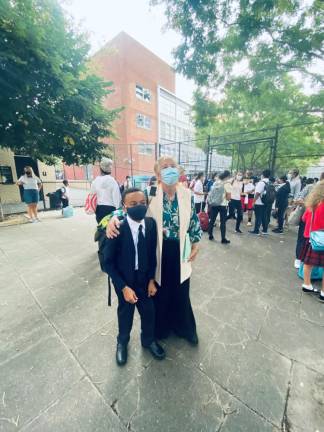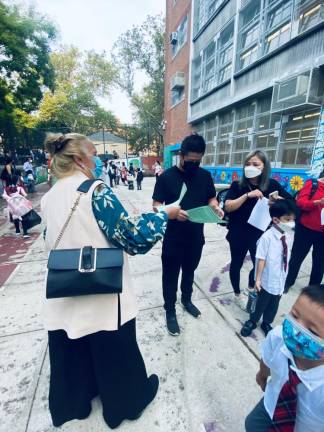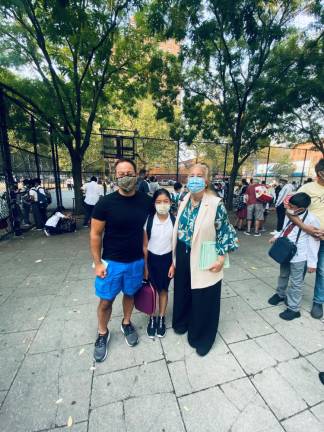Fully reopening our schools is critical for our city to heal from the collective trauma of the COVID-19 pandemic. Although we have come a long way, there are limitations when it comes to our ability to combat the spread of COVID-19. The New York City Department of Education must recognize the concerns of families and school communities by modifying the current safety protocols and offering them a remote option.
Manhattan families have been aggressively calling for a remote learning option. A resolution on the topic was introduced by board members in CEC [Community Education Council] 2 and resolutions have been passed in CEC 1, CEC 4, and CEC 6. Having a remote option has also been a persistent topic of discussion in CEC 5, as well as at the PEP [Panel for Education Policy]. Additionally, during a Back-to-School Day of Action where my staff and I were distributing resource flyers to families as they were dropping children off at school, several stopped to communicate their concerns that there were more than 20 students in classrooms and the lack of physical distancing. Disregarding these voices behind the rationalization of “following the science” is disrespectful and invalidating.
Not having a remote option is irresponsible given the fact that children under 12 cannot be vaccinated, the fact that the incentive of full FDA approval is nonexistent for people under the age of 16, and the fact that there are relatively low rates of vaccination in certain communities.
Sparse Testing
As of September 13, only 32% of Manhattanites who identify as Black and are age 13 - 17 are fully vaccinated; the vaccination rate for Black Manhattanites 18-44 years old is only 40%. The fully vaccinated rates for Manhattanites who identify as Hispanic/Latinx are 47% and 62% respectively for the aforementioned age groups. In some places in Harlem the vaccination rates are below 50%. We need more time to ensure that school communities are fully protected and, in the face of that, families should be able to choose to have their children learn remotely.
Exacerbating the concern around these vaccination rates is the extremely sparse testing happening as this school year gets underway. There are questions regarding whether testing only 10% of students is enough to understand the state of COVID-19 in schools and whether the use of a consent form produces a representative sample. The approach may only reflect the sample of the population that is consenting to the tests and who could be different from the sample who opts out, thereby skewing the data and leaving school communities vulnerable to spread.
I am on record in a letter to Chancellor Porter dated August 6 calling for a remote option as part of the plan to fully reopen schools. I appreciate the DOE’s response outlining the protective measures that they have worked diligently to put in place. I appreciate their effort regarding recent vaccine mandates and their alignment with CDC recommendations with their reopening protocols. However, on a local level, growing and cultivating relational trust with families and communities when that trust has a history of consistently being eroded takes a little more than what CDC guidelines have the capacity to express.
There are questions regarding whether testing only 10% of students is enough to understand the state of COVID-19 in schools and whether the use of a consent form produces a representative sample.


